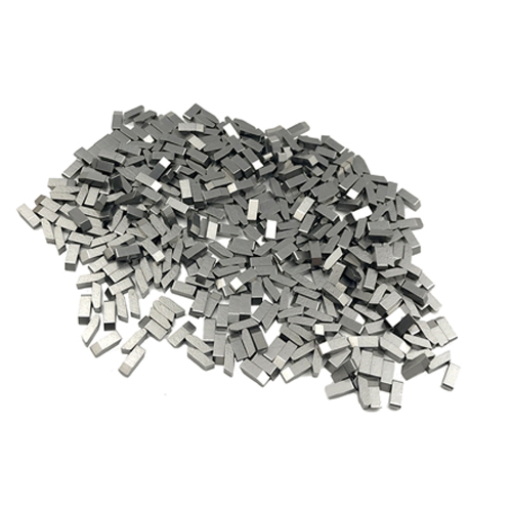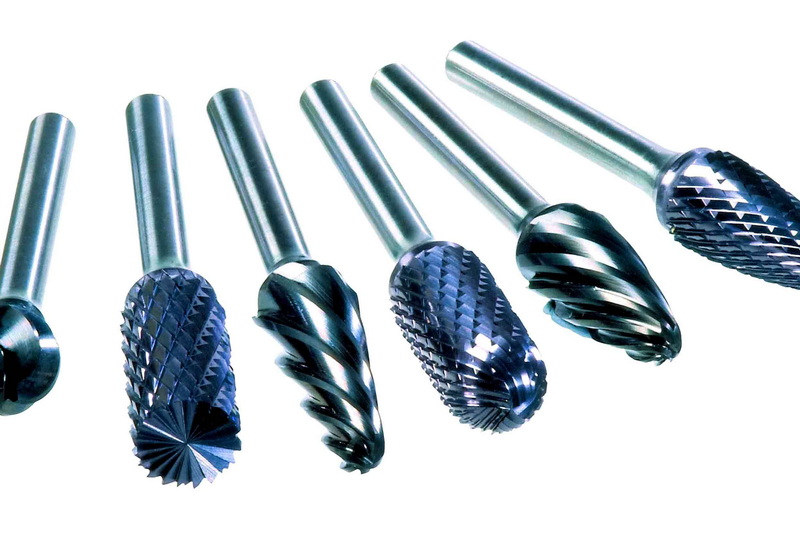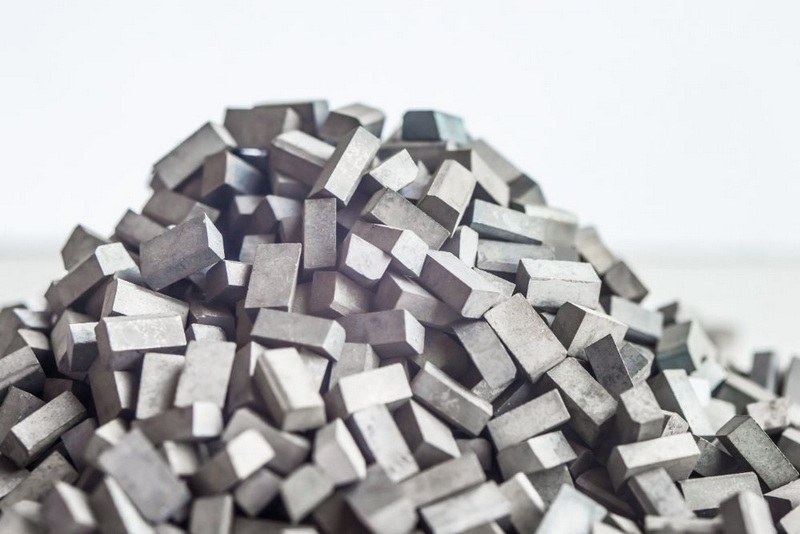Content Menu
● Composition and Properties
>> Tungsten Carbide
>> Steel
>> Comparison Table
● Hardness
● Toughness
● Wear Resistance
● Heat Resistance
● Tensile Strength
● Applications
>> Tungsten Carbide
>> Steel
● Cost and Manufacturing
● Advantages and Disadvantages
>> Tungsten Carbide
>> Steel
● Is Tungsten Carbide Stronger Than Steel?
>> When to Use Tungsten Carbide
>> When to Use Steel
● Conclusion
● FAQ
>> 1. What is the main difference between tungsten carbide and steel?
>> 2. Which material is better for cutting tools, tungsten carbide or steel?
>> 3. How does the heat resistance of tungsten carbide compare to that of steel?
>> 4. What are some common applications of tungsten carbide?
>> 5. What are some common applications of steel?
● Citations:
Tungsten carbide and steel are both popular materials in manufacturing, construction, and other industries. Each material has unique properties that make it suitable for different applications. Tungsten carbide is a compound known for its hardness and resilience, while steel is known for its toughness and tensile strength[4]. In this article, we will compare the properties of tungsten carbide and steel to determine which material is stronger and better suited for specific applications.

Composition and Properties
Tungsten Carbide
Tungsten carbide is a compound consisting of equal parts of tungsten and carbon, with the chemical formula WC[4]. The atoms arrange themselves in a crystalline lattice structure, giving it extraordinary hardness[4]. Tungsten carbide has a hardness that is second only to diamond on the Mohs scale, making it one of the hardest materials[4].
Steel
Steel is an alloy of iron and carbon, with other elements added to achieve specific properties. High-speed steel (HSS) is a type of steel commonly used for cutting tools due to its hardness and heat resistance[1].
Comparison Table
| Property | Tungsten Carbide | Steel |
| Hardness | 85-95 HRA[1] | 62-65 HRC (High-Speed Steel)[1] |
| Toughness | Brittle[1] | 0.18-0.32 MJ/m2 (High-Speed Steel)[1] |
| Wear Resistance | Superior[1] | Lower than Tungsten Carbide[1] |
| Heat Resistance | Up to 800-1000°C[1] | Hardness decreases above 500°C[1] |
| Tensile Strength | Up to 500,000 psi[9] | 100,000 to 150,000 psi[9] |
| Density | Approximately 15 g/cm3[11] | Approximately 7.9 g/cm3[11] |
| Elastic Modulus | 630 GPa[11] | 190 GPa[11] |
Hardness
Tungsten carbide is significantly harder than steel. Carbide tools typically have a hardness of 85-95 HRA, while high-speed steel (HSS) tools range from 62-65 HRC[1]. This superior hardness allows carbide to maintain a sharper cutting edge for longer periods and machine harder materials more effectively[1].
Toughness
Steel generally exhibits greater toughness compared to carbide[1]. High-speed steel has an impact toughness of 0.18-0.32 MJ/m2, making it more resistant to chipping and breakage[1]. Carbide, being a ceramic material, is more brittle and prone to fracturing under impact, despite its higher hardness[1].
Wear Resistance
Carbide demonstrates superior wear resistance compared to steel[1]. The high hardness and presence of hard carbide particles in its microstructure contribute to this property[1]. Carbide tools maintain their cutting edge and dimensional stability for longer periods, especially when machining abrasive materials[1][2].
Heat Resistance
Tungsten carbide outperforms steel in heat resistance. Carbide tools can maintain their hardness and cutting efficiency at temperatures up to 800-1000°C[1]. The hardness of high-speed steel tools begins to decrease significantly at temperatures above 500°C[1].
Tensile Strength
Tungsten boasts a tensile strength of around 500,000 psi, significantly surpassing the tensile strength of steel, which generally ranges from 100,000 to 150,000 psi[9]. This makes tungsten ideal for applications requiring high strength and minimal deformation[9].
Applications
Tungsten Carbide
Tungsten carbide is used in a variety of applications due to its hardness, wear resistance, and heat resistance[7]. These applications include:
- Cutting tools for machining, such as drill bits[7][10]
- Wear-resistant parts, such as nozzles and bearings[3]
- Drilling tools for the mining and drilling industry[7]
- Surgical instruments due to their performance and corrosion resistance[10]
- Components that must withstand high temperatures[5]

Steel
Steel is used in a variety of applications due to its toughness, tensile strength, and cost-effectiveness[5]. These applications include:
- Cutting tools, such as drills, taps, and saw blades[5]
- Structural components in construction, such as beams and columns[10]
- Automotive components, such as gears and axles
- Fasteners, such as bolts and screws
Cost and Manufacturing
High-speed steel is generally less expensive to produce and purchase[5]. Tungsten carbide, although more costly, offers a longer lifespan and better performance in challenging conditions[5]. This makes tungsten carbide more cost-effective in the long term, especially for high-wear environments[5]. The manufacturing of tungsten carbide involves sintering, a process that requires sophisticated equipment and techniques, contributing to its higher cost[5]. In contrast, HSS can be produced using more conventional metallurgy methods[5].
Advantages and Disadvantages
Tungsten Carbide
Advantages:
- High hardness[1]
- Excellent wear resistance[1]
- High heat resistance[1]
- High compressive strength[2]
- Maintains structural integrity under stress[2]
Disadvantages:
- Brittle and prone to fracturing under impact[1]
- More expensive than steel[5]
- Requires sophisticated manufacturing techniques[5]
Steel
Advantages:
- High toughness[1]
- More resistant to chipping and breakage[1]
- Less expensive than tungsten carbide[5]
- Can be produced using conventional metallurgy methods[5]
Disadvantages:
- Lower hardness than tungsten carbide[1]
- Lower wear resistance than tungsten carbide[1]
- Hardness decreases significantly at temperatures above 500°C[1]
Is Tungsten Carbide Stronger Than Steel?
Tungsten carbide is stronger than steel in terms of hardness, wear resistance, heat resistance, and compressive strength[1][2]. However, steel is tougher and more resistant to impact[1]. The choice between tungsten carbide and steel depends on the specific application and the properties required[5].
When to Use Tungsten Carbide
Tungsten carbide is the preferred choice for extreme conditions where high hardness, wear resistance, and temperature stability are required[5]. It is ideal for applications such as cutting tools, wear-resistant parts, and drilling tools[7].
When to Use Steel
Steel is sufficient for general cutting tasks and is more cost-effective for certain applications[5]. It is ideal for applications where toughness and impact resistance are required, such as structural components and automotive parts[10].
Conclusion
In conclusion, tungsten carbide and steel are two different materials with unique properties that make them suitable for various applications. Tungsten carbide is stronger than steel in terms of hardness, wear resistance, heat resistance, and compressive strength[1][2]. However, steel is tougher and more resistant to impact[1]. The choice between tungsten carbide and steel depends on the specific application and the properties required[5]. When high hardness, wear resistance, and temperature stability are required, tungsten carbide is the preferred choice[5]. When toughness and impact resistance are required, steel is the better option[1].

FAQ
1. What is the main difference between tungsten carbide and steel?
Tungsten carbide is a compound known for its exceptional hardness and wear resistance, making it ideal for applications requiring extreme durability and precision[4][5]. Steel, on the other hand, is known for its toughness and tensile strength and is more cost-effective for certain applications[5].
2. Which material is better for cutting tools, tungsten carbide or steel?
Tungsten carbide is generally better for cutting tools due to its superior hardness and wear resistance[1][5]. It can maintain a sharper cutting edge for longer periods and machine harder materials more effectively[1]. However, steel cutting tools are more cost-effective for general cutting tasks[5].
3. How does the heat resistance of tungsten carbide compare to that of steel?
Tungsten carbide outperforms steel in heat resistance[1]. Carbide tools can maintain their hardness and cutting efficiency at temperatures up to 800-1000°C, while the hardness of high-speed steel tools begins to decrease significantly at temperatures above 500°C[1].
4. What are some common applications of tungsten carbide?
Tungsten carbide is commonly used in cutting tools for machining, wear-resistant parts, drilling tools for the mining and drilling industry, surgical instruments, and components that must withstand high temperatures[7][10].
5. What are some common applications of steel?
Steel is commonly used in cutting tools, structural components in construction, automotive components, and fasteners[5][10].
Citations:
[1] https://cowseal.com/carbide-vs-steel/
[2] https://passionblade.com/is-tungsten-carbide-stronger-than-steel/
[3] https://www.dymetalloys.co.uk/what-is-tungsten-carbide/tungsten-carbide-grades-applications
[4] https://be-cu.com/blog/tungsten-steel-vs-tungsten-carbide/
[5] https://www.carbide-products.com/blog/tungsten-carbide-and-hss/
[6] https://www.makeitfrom.com/compare/AISI-316L-S31603-Stainless-Steel/Tungsten-Carbide-WC
[7] https://eurobalt.net/blog/2022/03/28/all-the-applications-of-tungsten-carbide/
[8] https://www.mycarbides.com/is-tungsten-carbide-stronger-than-steel/
[9] https://shop.machinemfg.com/tungsten-vs-steel-a-comprehensive-analysis/
[10] https://www.tungco.com/insights/blog/5-tungsten-carbide-applications/
[11] https://www.makeitfrom.com/compare/ASTM-A36-SS400-S275-Structural-Carbon-Steel/Tungsten-Carbide-WC
















